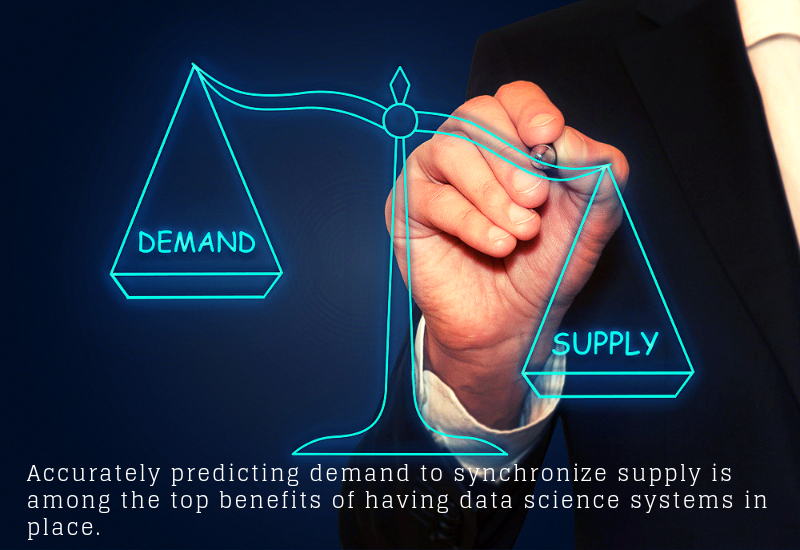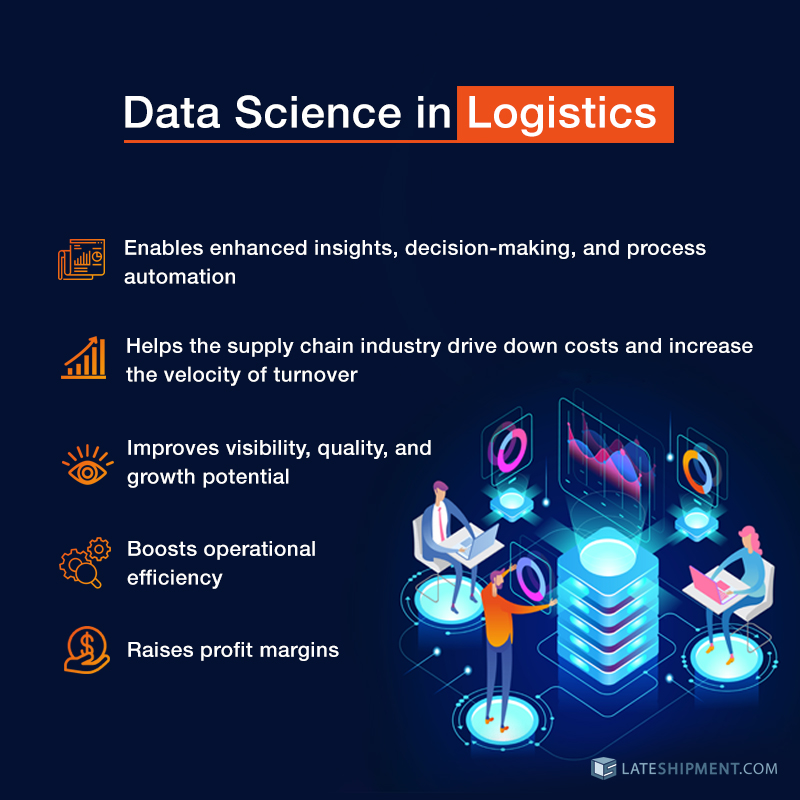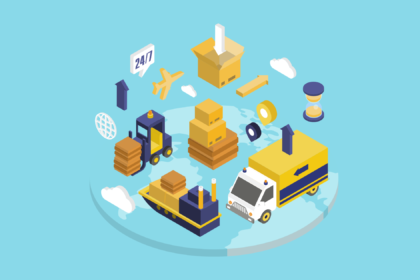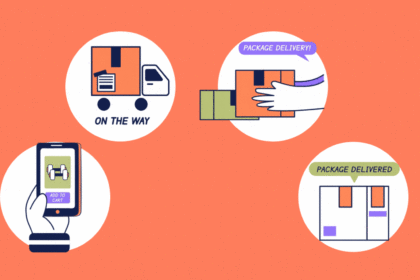Introduction
Few technologies have generated as many advances in logistics as data science. The inception of the so-called “Industry 4.0,” which is driving growth in the supply chain management industry, is hinged on data science and its applications.
With the extensive use of generated data, statistical and quantitative analysis, and predictive models, data science can enable enhanced insights, decision-making, and process automation. Throughout the years, data science has helped the entire supply chain industry drive down costs, improve operational efficiency, and increase the velocity of turnover. These are much needed improvements in this notoriously complex global industry.
[bctt tweet=”Data science can enable enhanced insights, decision-making, and process automation.” via=”no”]
A big part of all this is Big Data, which has been growing at a fast pace in recent years. Information Age details how the adoption of this new technology grew by 59% in the space of under three years. This number is only expected to increase soon. Maryville University reports that the annual data created worldwide will reach 180 trillion gigabytes by 2025. This shows how prominent data has become and why so many industries are investing in data science. The logistics industry will be a key area that takes advantage of this rise in available and still burgeoning volumes of data.
A single part of the supply chain alone can generate many streams of data, leaving an ever-widening door of opportunities for logistics companies and analytics providers. Current advances in data science are enabling businesses in the logistics industry to use these data points for innovation.
A single part of the supply chain alone can generate many streams of data, leaving an ever-widening door of opportunities for logistics companies and analytics providers.
All said and done, there are three principle benefits that data science brings to the logistics industry.
1. Improved visibility, quality, and growth potential
Data analytics is one of the key enablers of visibility. Visibility has been one of the key trends in logistics over the past few years. The demand for greater transparency and on-demand traceability of products being moved across the supply chain is higher than ever with the advent of direct-to-consumer marketing business models.
[bctt tweet=”Data analytics is one of the key enablers of visibility.” via=”no”]
DHL’s Resilience 360 provides multi-tier visibility into its supply chain. The Resilience 360 app it launched to accompany its business platform offers near real-time visibility across transport modes. By leveraging multiple streams of data and modeling systems, the current platform boasts a capability to identify key areas of improvement even beyond suppliers or factories. This, as Google notes in its review, will address the various risks logistics companies face in a proactive way.
In its “Data Analytics in SMEs: Trends and Policies” white paper, the Organisation for Economic Cooperation and Development notes that innovations in data science are making it more accessible to small and medium enterprises, which increases scalability potential. The increasing business-to-business data analytics platforms targeted to SMEs can help them envisage the same visibility as big transnational logistics businesses without the heavy cost of an ICT infrastructure. Last mile delivery applications and small e-commerce platforms can now overlay their businesses on top of third party logistics companies.

Closing data gaps in the industry also facilitates a smoother transition to automation and other applications including the deployment of Internet of Things and artificial intelligence technologies.
Data science also helps in achieving efficiencies on the operational front.
2. Operational efficiency
Amazon’s data analytics technology that is called “anticipatory shipping” takes efficiency to another level. With data analytics, the company predicts demand in specific locations to strategically position its products. This makes one to two-day deliveries easier to accomplish for customers who demand them. And not surprisingly, this patented technology can disrupt the logistics industry as we know it. With products placed near the “anticipated demand” category, consumers can greatly benefit from the reduction in delivery times and, as Amazon projects, delivery costs.
Accurately predicting demand to synchronize supply is among the top benefits of having data science systems in place. At any given time, there are multiple data points which companies will be able to model and take into consideration – this includes currency rates, commodity trends, weather data, together with the predicted demand. And with the more efficient modeling of these data points, companies can significantly drive down costs and develop better inventory management capabilities.

Being able to cut costs without sacrificing quality is one of the key features data science affords logistics companies. Managers can then make on-demand and data-driven decisions to improve operational efficiency.
[bctt tweet=”Being able to cut costs without sacrificing quality is one of the key features data science affords logistics companies.” via=”no”]
Data-driven modeling in the adoption of new technologies and innovations is also one of the key optimizations data science offers to the logistics industry. For example, research published by the Industrial and Systems Engineering Magazine used previously generated data to create a simulation designed to aid in deciding whether or not to adopt an RFID system in warehouse management systems.
Data-driven modeling removes the guesswork and minimizes the risk in adopting new assets and technologies, and it can accurately predict the return of investments in adopting these innovations.
Data science’s impact can go as far as boosting the bottom line of businesses.
3. Raising profit margins
Optimizing efficiencies at scale saves a lot of overhead costs across every part of the global supply chain. UPS’ ORION (On-Road Integrated Optimization and Navigation) uses massive amounts of customer data to reduce costs in last-mile deliveries.
The parcel delivery company reports that it has saved at least 100 million delivery miles since the tech was employed. The technology, which is integrated with its proprietary map UPSNav, continuously refreshes and optimizes routes for its delivery transports – greatly reducing greenhouse gas emissions as well as delivery costs.
With many factors affecting a supply chain, being able to have information and insights through data science can give companies that much-needed edge against their competitors. Some of these factors are regulatory effects, environmental factors, capacity challenges, and end-to-end trends. As previously mentioned, data-driven modeling acts as a catalyst to efficiently adopt technologies and cuts the costs of trial processes entirely.

Logistics is a very costly and often risky business. However, data presents an opportunity to work toward stability and the capacity to manage, if not mitigate, risks involved in both forward and backward linkages. Even in shipping insurance, Big Data analytics can tell you exactly whether it is risky to let go of insurance costs.
Conclusion
Cybersecurity is a growing concern among logistics companies. But as data science advances in applications like fraud and attack detection, its adoption is bound to save companies billions of dollars. Especially with the changing regulatory environment around data collection, having good data-driven cybersecurity systems in place protects you from costly litigations – not to mention possible damage to your customer base.
All things said and done, expect to hear more about the role of data science in logistics in the months and years to come.
____________________________________________________________
This article is a guest post by Nicole Bowles.
____________________________________________________________

A Little about LateShipment.com
We at LateShipment.com work hard to make “parcel shipping & delivery” transparent and help businesses be fully in control of their last-mile success.
Some of our high-impact offerings are:
- Automating refund claims from your shipping carriers for service failures to help you save money on shipping.
- Giving you full control over delivery delays that harm your brand and sales. You can now predict parcel delays and even fix them by keeping customers informed.
- Reporting at every stage of “shipping & delivery” to enable you with critical supply-chain insights.
The value we add to businesses is most evident when experienced first-hand.







